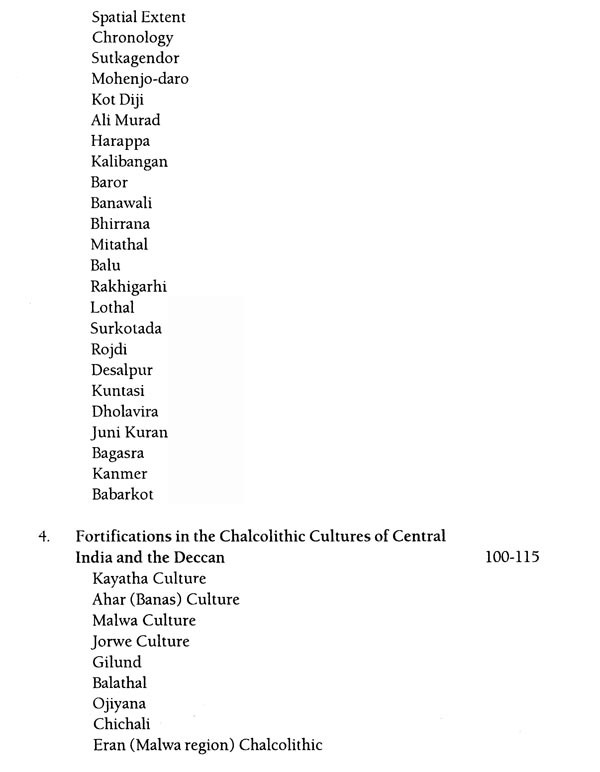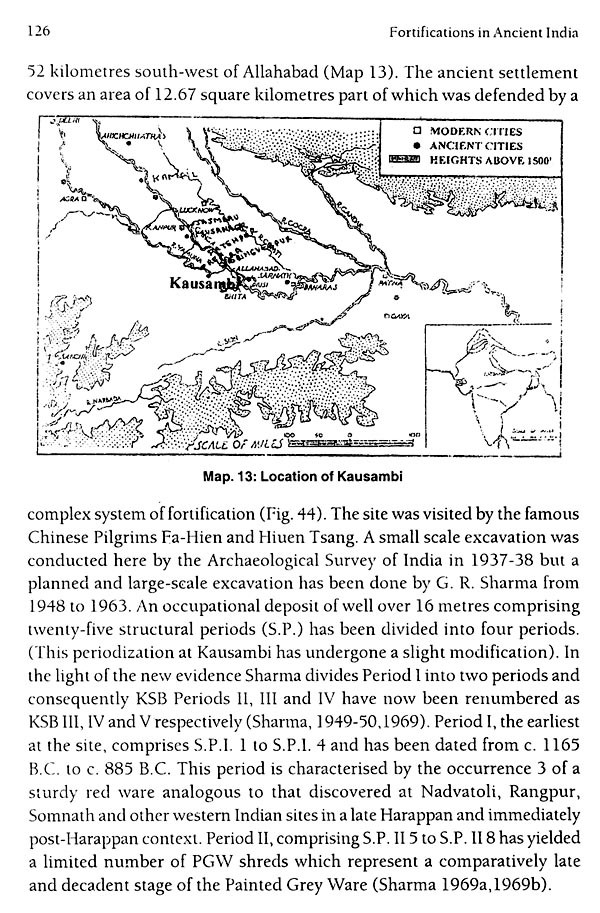
Fortifications in Ancient India- A Study of Protohistoric Cultures
Book Specification
| Item Code: | AZG387 |
| Author: | Umesh Kumar Singh |
| Publisher: | KAVERI BOOKS |
| Language: | ENGLISH |
| Edition: | 2011 |
| ISBN: | 9788174791047 |
| Pages: | 228 (Throughout B/w and Color Illustrations) |
| Cover: | HARDCOVER |
| Other Details | 10.00x7.50 inch |
| Weight | 670 gm |
Book Description
It is widely known that the Harappan Civilization, one of the greatest civilizations of the world, flourished in the 3rd-2nd millennium B. C. and is unique in town planning. Fortification is one of the important aspects of its town planning. This hallmark of civilization is unique to the Harappan urbanization which strictly utilized their technological advances in ushering a highly civilized and organized society. The need for standardization was fully appreciated and could be seen throughout the Harappan empire giving it the shape of an early organized state in ancient India.
The present work is an attempt to reconstruct the origin, development and primary function of fortification in the Indo-Pak sub-continent on the basis of the archaeological remains obtained from archaeological explorations and excavations in recent years. The period encompasses the time bracket between the Neolithic when the cultivation of cereal plants was introduced for the first time and the beginnings of early historical period around 600 B. C. This time span has been designated 'protohistoric'.
Fortifications in the archaeological context can be defined as protective or defensive works or enclosure around any settlement or area with or without a moat or ditch. Such defensive structures are built on a formal or informal plan and generally bear a massive character. At times such structural works cover only three sides of the respective habitation area. The principal structural features of any ancient fortification are massive walls with attached quadrangular or semi-circular bastions to strengthen the walled structure and the same for watch towers, besides one or more gates sometimes even with the guard rooms (Ghosh 1989: 297-298).
The earliest Neolithic settlements and fortifications are reported from the hill-slopes of the 'Fertile Crescent' of western Asia and on the uplands of Anatolia. The Neolithic people constructed permanent dwellings within fortification having towers. On the present evidence the most ancient town was built at Jericho now called Tell Es-Sultan in Jordan excavated in 1907 and again in 1935-36 when the Neolithic origin of the site was brought to light.
**Contents and Sample Pages**

















